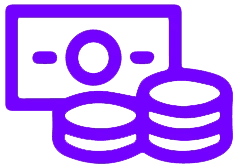What is Call Center Data?
Call center data is any type of data stored in a call center or a contact center. This can include information such as customer accounts, agent performance records, and company finances.Call center data can be sensitive, especially when customer accounts contain payment information. These days, most such data is stored in cloud-based servers. While some organizations prefer to have their data kept in on-site servers, technology has advanced significantly and cloud-based servers rely on advanced network and system security controls to ensure that hackers cannot access a company’s sensitive information. Most call centers opt for cloud-based storage since on-site servers can be extremely costly to install and maintain. Troubleshooting is much easier with cloud-based servers as well, usually only involving a phone call to tech support.In order to keep information safe, call centers employ strict cyber security protocols to prevent hackers from gaining access to their servers. In addition, call centers aim to remain compliant with the most current data protection laws (most are PCI DSS and SOC 2 compliant). Depending on the industry a call center serves, leadership may also implement HIPAA, FISMA, or FedRAMP compliance standards. It’s critical for call centers to protect the data they store with strict standards preventing others from stealing information.How is data analyzed in a call center?
Key performance indicators (KPIs) need to be identified. These are the metrics that matter most to a business, such as average handle time (AHT), first call resolution (FCR), customer satisfaction (CSAT), and abandonment rate.Then the relevant sources for the data need to be determined. Data can come from various contact center sources, such as call logs, customer surveys, quality assurance reports, and agent performance reports. The data needs to be cleaned and organized by collating data sets from different sources and combining them in one system to avoid errors, identifying and removing duplicates, filling in missing fields, and ensuring accurate labeling of data points.The next stage is visualizing the data with charts, graphs and dashboards to make it easier for key stakeholders to understand data sets and metrics. The data can then be analyzed for patterns, trends and anomalies to understand the story behind it. Key data analysis tools like pivot tables, heat maps and regression analysis can be used to extract insights.Actionable recommendations can be developed based on the analysis. This includes identifying areas of improvement within the contact center and creating an action plan for improvement, which could encompass developing customer experience programs, agent training plans or process optimization.Progress should be monitored and processes refined on an ongoing basis. Continuing to monitor metrics and operations will provide the feedback needed to validate and refine assumptions, recommendations and implementation efforts.Different types of contact center analytics
- Operational: Operational analytics focuses on the performance of contact center operations, including metrics such as call volume, average handle time, first call resolution rate, and service level agreements (SLAs).
- Customer experience: Customer experience analytics measures customer satisfaction levels, using tools such as customer surveys and feedback, net promoter score (NPS), customer effort score (CES), and customer sentiment analysis.
- Quality assurance (QA): Quality assurance analytics assesses the performance of individual agents, measuring factors such as compliance with scripts and quality control protocols.
- Speech: Speech analytics analyzes customer conversations and agent call handling techniques, identifying speech patterns for trending insights related to customer satisfaction, call duration, call quality and customer needs.
- Predictive: Predictive analytics uses machine learning and algorithms to predict future trends and behaviors based on historical data. This type of analytics can help call centers improve call volume predictions, understand customer preferences, and identify trends to make more informed decisions.
- Text: Text analytics evaluates interactions with non-voice customer channels like email, chat and messaging platforms. Text analytics focuses on data mining techniques like categorization and sentiment analysis to discover customer preferences and topics of discussion, customer interactions, and common problems.
How NiCE is Redefining Customer Experience
NiCE offers the industry’s only unified AI platform for customer service automation. CXone Mpower revolutionizes how organizations automate customer service from start to finish—with channels, data, end-to-end workflows, and enterprise knowledge converging to improve customer experience at scale. With domain specific AI trained on the industry’s largest CX dataset, an open framework with endless integration possibilities, and a complete suite of advanced AI applications, CXone Mpower is one platform built for organizations of all sizes to deliver seamless customer service experiences, boost operational efficiency, and drive better outcomes.Interaction Orchestration
Omnichannel interaction routingDigital and Voice ChannelsAutomatic Call Distributor (ACD)Interactive Voice Response (IVR)Proactive Engagement

